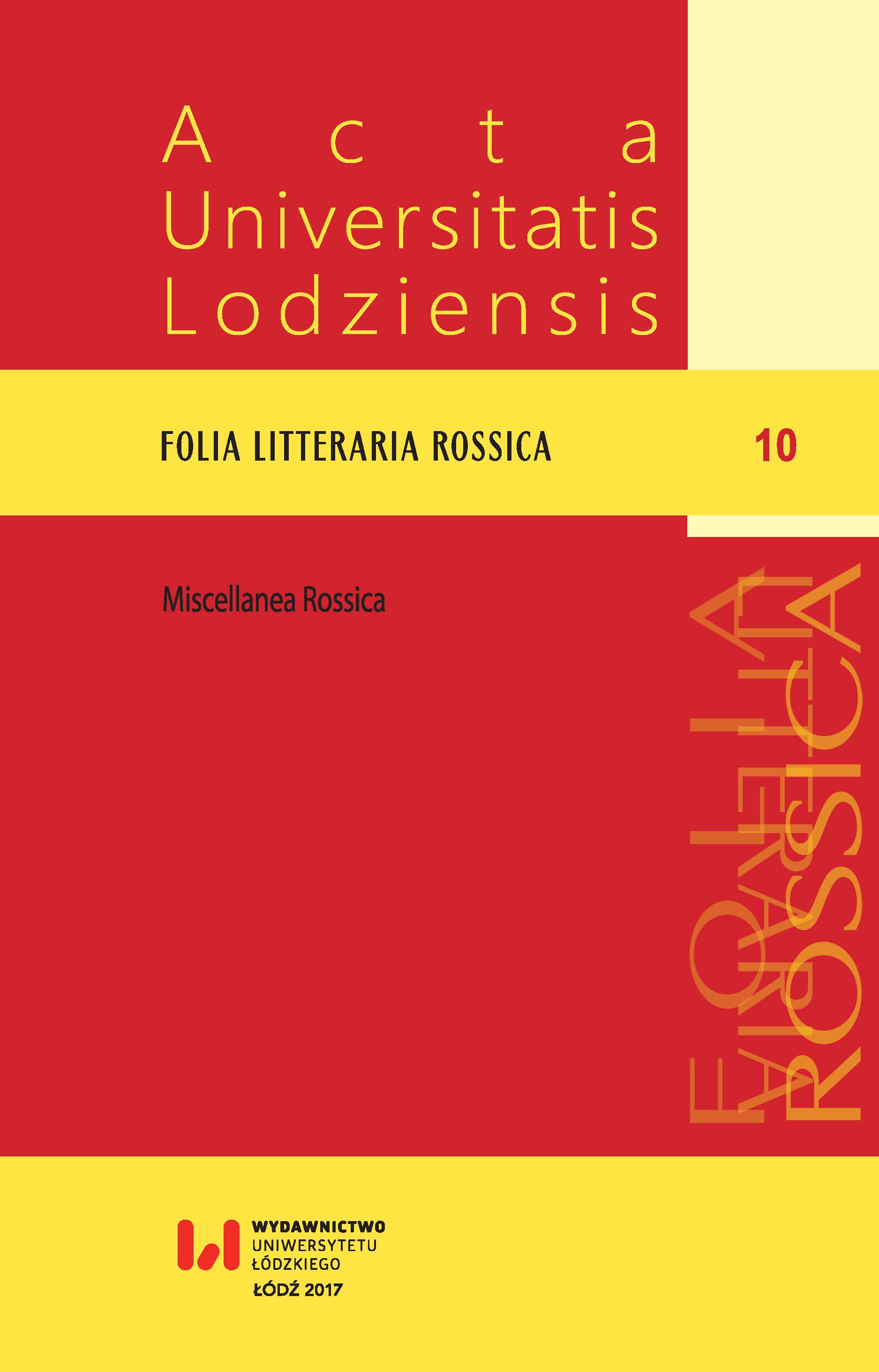Художественные функции образа матери в творчестве Михаила Булгакова (на примере избранных произведений)
Artistic Functions of the Mother Figure in the Ouevre of Mikhail Bulgakov (On the Basis of Selected Works)
Author(s): Tatiana StepnowskaSubject(s): Philology
Published by: Wydawnictwo Uniwersytetu Łódzkiego
Keywords: Mikhail Bulgakov; The White Guard; motif of mother; the 1918–1919 civil war in Kiev; autobiographical motifs; Михаил Булгаков; Белая гвардия; мотив матери; гражданская война в Киеве 1918–1919
Summary/Abstract: The figure of a mother and issues connected with motherhood are themes seldom encountered in Bulgakov’s works. It may be assumed that this is due to the fact that the writer himself did not have children, even though he was married three times and had been brought up in a family of seven children. In fact, Bulgakov was the oldest of them and his younger siblings were growing up in front of his eyes and with his help after their father’s death at the age of 48. These circumstances notwithstanding, the author of The Master and Margarita focused more strongly on creating touching figures of mistresses, women suffering because of love, ready to sacrifice even their lives for the sake of their lovers. One of the most beautiful and best-known mother figures is the mother of the Turbin family in the novel The White Guard. Her prototype was the writer’s mother, Varvara Mikhailovna Pokrovskaya (1869–1922). The novel begins with her illness and death, which forebode the following tragic events and sufferings awaiting the children during the civil war. In Master and Margarita during Satan’s ball a ghost of a mother who killed her newborn child appears. The drama about Molière, in turn, introduces a traitress mother, who on her deathbed confesses the secret of her daughter’s birth, thus ruining the latter’s family. Viewed against the background of these figures, the mother of the Turbins appears to be an ideal woman and that is why Bulgakov calls her “the bright queen.” Her image provides a key to understanding the essence of the characters of the young Turbins, who inherit from their mother a moral code and an ability to sacrifice themselves for others. // В творчестве Булгакова образ матери и проблемы материнства появляются крайне редко. Возможно, это связанно с тем, что у писателя никогда не было собственных детей, хотя он был три раза женат и рос в многодетной семье. Булгаков был самым старшим ребенком и остальные братья и сестры воспитывались на его глазах и с его помощью после смерти отца, который скончался в возрасте 48 лет. Автор Мастера и Маргариты создал много необыкновенных и трогательных образов любовниц, женщин, страдающих из-за любви, готовых посвятить себя и даже свою жизнь любимому мужчине. Одним из самых прекрасных и наиболее известных образов матери является образ матери семьи Турбиных в романе Белая гвардия. Ее прототипом была мать писателя – Варвара Михайловна в девичестве Покровская (1869–1922). Роман начинается с ее болезни и смерти, что является предвещанием трагических событий и страданий, которые ожидают ее детей во время гражданской войны. В Мастере и Маргарите на балу сатаны появляется душа матери-убийцы только что рожденного ребенка, в драме о Мольере изображена мать-предательница, которая на предсмертной исповеди выявляет тайну рождения своей дочери, чем уничтожает ее семью. На фоне этих образов матерей мать Турбиных является женщиной идеальной, поэтому писатель определяет ее как «светлую королеву». Этот образ становится своеобразным ключом к пониманию сущности образов молодых Турбиных, которые унаследовали у своей матери нравственный кодекс и способность жертвовать собой ради других.
Journal: Acta Universitatis Lodziensis. Folia Litteraria Rossica
- Issue Year: 2017
- Issue No: 10
- Page Range: 55-66
- Page Count: 12
- Language: Russian

